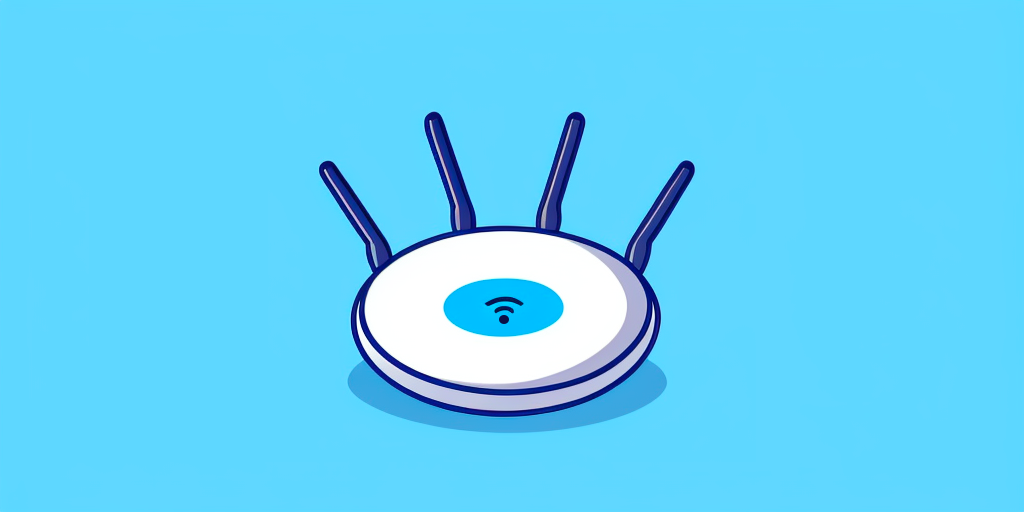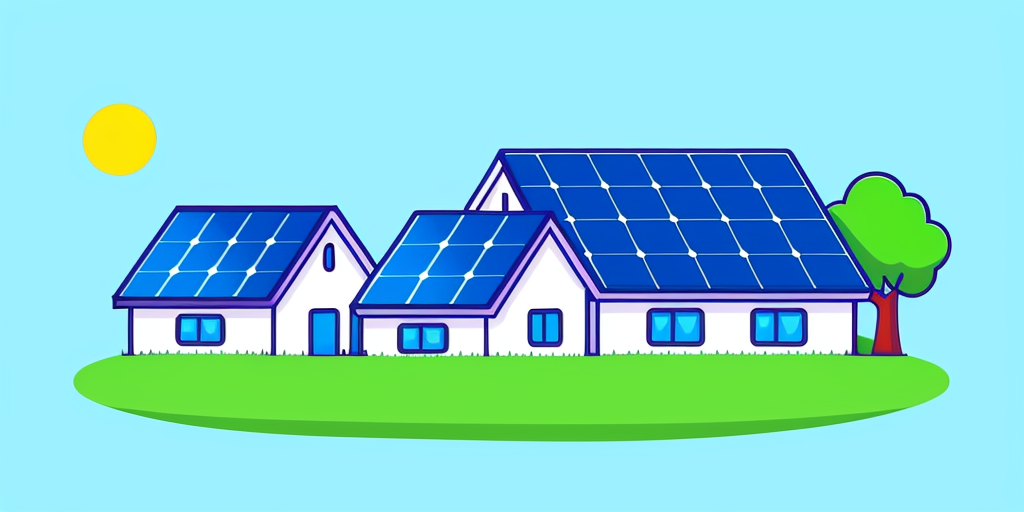As the world evolves, we have seen the integration of technology into our daily lives, particularly in our homes. From voice-controlled lights to smartphone-enabled security systems, it’s clear we are living in the era of the smart home. On another front, solar energy has emerged as an affordable, sustainable energy option for homeowners, harnessing the power of the sun to fuel our lives. Combining these two realms — smart homes and solar energy — could be the next step towards a more self-sufficient and sustainable lifestyle. But are they a perfect match? This article delves into how these two different domains can work hand in hand to create self-sufficient households.
A smart home refers to a residential setting where devices and appliances are interconnected, enabling them to communicate with each other and with the homeowner. At its core, a smart home facilitates automation and control of many aspects of the home, enhancing comfort, convenience, energy efficiency, and security. The degree of automation can range from basic tasks such as controlling lights and appliances remotely to more complex functionalities like advanced security systems with facial recognition or smart thermostats that learn and adapt to your routines. Devices in a smart home are usually connected through a home network to allow control via a central hub, often a smartphone or other networked device.
Smart homes also bring a level of intelligence to how a home operates. For example, by tracking usage patterns, a smart home can optimize energy usage around peak and off-peak hours, ensuring the home’s energy usage is as efficient as possible. This goes beyond mere convenience, translating into real-world savings on energy costs and significantly reducing the home’s environmental footprint.
The Internet of Things, or IoT, is a network of physical devices that are connected to the internet, allowing them to communicate and exchange data. IoT forms the backbone of the smart home, as it is the technology that allows devices to interact and function as a cohesive system. In a smart home context, IoT enables devices to operate independently while also working together when needed. For example, your smart thermostat can adjust the temperature based on your preferred settings and the weather forecast, or your smart fridge can keep track of your groceries and alert you when you’re running low on certain items.

IoT devices collect and analyze data, giving homeowners insights into their habits and preferences. This not only increases convenience but also leads to significant energy savings by optimizing resource utilization. For instance, smart lights can turn themselves off when no one is in the room, and a smart irrigation system can adjust watering schedules based on weather data. It is worth noting that the IoT brings about potential concerns related to data security and privacy. As with any technology that involves the exchange of data over the internet, it’s crucial to ensure that robust security measures are in place to protect against potential threats.
Integrating smart technology into homes requires the development of a comprehensive and robust infrastructure that encompasses various essential elements. By incorporating these key components, homeowners can fully harness the benefits of smart technology in their daily lives.
Smart technology and solar energy, at first glance, may seem like separate entities. However, the correlation between these two innovative fields becomes apparent. The underlying link lies in their shared objective: efficiency. Both smart technology and solar energy aim to make our lives more efficient, environmentally friendly, and cost-effective. Smart technology, characterized by interconnected devices and intelligent automation, has drastically changed the way we live and interact with our homes. From voice assistants like Alexa to home security systems controlled by our smartphones, smart technology enables us to live in homes that adapt to our needs and lifestyles. Whether it’s for improved home security, enhanced energy efficiency, personalized customization, health and wellness tracking, or simple interconnectivity, smart technology is making our lives easier while saving energy and reducing costs.
Solar energy plays a crucial role in providing the power required by smart devices. Smart homes equipped with solar power systems create a sustainable and self-reliant energy loop. This loop ensures that the house continuously receives electricity from the sun, keeping all automated devices online and functioning reliably. The solar panels in such setups can connect directly to specific smart home devices. For example, smart thermostats and smart lights can be paired with your smart solar system. This interconnectivity allows the devices to operate in harmony, optimizing energy use based on real-time data from the environment and the homeowner’s habits.
Moreover, smart appliances can be designed to be even more energy-efficient when working in a solar-powered smart home. This is possible through smart grid technology, which enables appliances to use energy when it’s most abundant and least expensive. For instance, a smart washing machine could run a cycle when your solar panels are generating more energy than your home is consuming, thereby maximizing the use of renewable energy and saving costs.
In essence, solar energy not only powers the smart devices but also elevates their functionality. The integration of solar energy with smart technology could eventually lead to complete energy independence, distancing households from traditional utility companies and the power grid. Additionally, the argument can be made that true “smart” homes are those that utilize renewable energy sources like solar power, shunning the use of damaging nonrenewable energy sources such as gas and oil. This shift to solar energy indicates a more sustainable, intelligent, and forward-looking approach to managing our homes and preserving our planet.

According to a study by Solar Energy UK, as global efforts are being made to achieve net zero carbon emissions, governmental strategies are stimulating a shift towards electric vehicles (EVs). This transition increases electricity demand, calling for a boost in renewable generation. This spike in demand, especially during peak usage periods, imposes a significant strain on electricity systems. For example, mass EV charging in commuter areas or high generation with low demand during favorable weather conditions could disrupt the grid balance. The solution to such challenges lies in promoting flexibility across the power system. Flexibility includes the ability to adjust electricity usage, storage, and grid export based on demand and supply.
The promotion of widespread flexibility can stave off expensive grid reinforcements, subsequently reducing the burden of energy bills on consumers as these upgrade costs are usually passed down. Enhanced flexibility also allows for new renewable sources to be connected to the grid and prevents shutting down renewable generators when generation surpasses demand. Additionally, the flexibility of power systems plays a key role in decreasing carbon emissions, as it reduces the need to resort to high-carbon fossil-fuel generators during peak times. This practice can help avoid unintentional power outages, disconnects, or unnecessary expensive infrastructure investments.
The need for grid balance through flexibility is rising, underscoring the growing significance and market value of flexible power sources. However, not all flexibility service providers are low-carbon, such as gas power stations, which are carbon-intensive and polluting. As an alternative, incentivizing flexibility from low-carbon smart homes could help balance the electricity grid with greener technologies, introduce more renewables to the system, and reduce network operation costs. While households can potentially play a significant role in fostering a more flexible electricity grid, currently only a small fraction engage in practices such as Time of Use Tariffs (TOUTs) or participate in local flexibility tenders due to policy and regulatory barriers. The adoption of smart homes can help overcome these challenges, making them a pivotal part of the journey towards achieving net zero.
While the integration of solar-powered smart homes offers numerous benefits, there are several challenges that need to be addressed for widespread adoption and implementation. These challenges include:
Addressing these challenges requires a multi-faceted approach involving policymakers, industry stakeholders, and consumer education initiatives. Measures such as financial incentives, streamlined regulations, and comprehensive consumer awareness campaigns can help overcome these barriers and promote the widespread adoption of smart homes. As the technology advances and the benefits become more apparent, the challenges can be addressed, paving the way for a future where smart homes play a significant role in achieving sustainable and energy-efficient living.
Smart homes and solar energy come with a host of benefits that can significantly improve our lifestyle and impact the environment positively. Here are some of the key benefits:
A primary advantage of smart homes lies in the ease of management and operation. These homes utilize interconnected devices or Internet of Things (IoT) that communicate and gather data via a centralized control unit. This central hub can link to solar or other alternative energy sources, which in turn connect to a battery storage system, powering various home appliances. Homeowners can conveniently control numerous devices, from lighting and computers to thermostats, sprinkler systems, and security systems, through this hub. In addition, the use of smartphones for controlling these devices adds an extra layer of convenience. Thus, simplifying the complex processes of home management and energy utilization.
Smart homes empower homeowners by providing comprehensive control over the residence. The network of interconnected devices yields valuable insights about energy usage, helping homeowners better regulate energy use. Automation of smart home systems eliminates the need for manual checks on running appliances, offering not only convenience but also greater control. From a garden irrigation system that adjusts to current weather conditions to a remotely controlled thermostat, smart homes enhance the overall living experience. The system can adapt to homeowners’ configurations and habits, subtly operating in the background, making the home a more tailored, personal space.

Smart homes excel in delivering unmatched energy efficiency. With most appliances connected and able to communicate their energy needs to a central hub, a smart home can effectively prioritize essential systems and minimize wastage from idle devices. For instance, a smart home could direct a washing machine to operate only when weather conditions favor solar electricity generation or when the battery system has enough charge to support the washing cycle. This smart, intuitive capability reduces waste and promotes optimal energy utilization, making smart homes a beacon of energy efficiency.
Smart homes, through their enhanced efficiency, have a smaller environmental footprint and offer significant potential for cost savings. They can be particularly impactful in regions where energy prices fluctuate or where consumers face substantial demand charges. Smart home systems can automate processes to reduce peak energy usage, known as peak shaving, effectively cutting down energy costs. With the declining costs of smart home systems, connected devices, and solar-plus-storage systems, coupled with potential savings on energy bills, there’s never been a better time for homeowners to consider integrating solar energy into their smart homes. Not only does this integration offer substantial financial benefits, but it also contributes to a more sustainable, energy-efficient future.

Integrating smart technology with solar energy systems also opens up opportunities for data analysis. Data gathered from these systems can help in timely maintenance, efficient energy storage, and optimal utilization. This is another instance where the combination of smart technology and solar energy proves beneficial.
In conclusion, the integration of smart homes and solar energy presents a compelling partnership that holds great promise for a sustainable and self-sufficient future. As our world embraces advanced technology and the need for environmentally friendly practices becomes increasingly evident, the combination of smart homes and solar energy emerges as a perfect match. By leveraging interconnected devices and renewable solar power, smart homes promote energy efficiency, reduce reliance on traditional energy sources, and contribute to a greener lifestyle. The potential benefits, including convenience, cost savings, and reduced environmental impact, make the integration of solar energy and smart homes an enticing proposition. While challenges remain, addressing them through collaborative efforts among policymakers, industry stakeholders, and consumer education initiatives can pave the way for widespread adoption. The vision of a future where homes are not only intelligent but also sustainable is within reach, and the integration of smart homes and solar energy brings us one step closer to achieving it.
Smart homes benefit from solar energy by utilizing renewable power to operate interconnected devices and appliances. Solar panels generate electricity from the sun, which can power various smart devices, reducing reliance on traditional energy sources and promoting sustainability.
Yes, solar energy can enhance the energy efficiency of smart homes. By harnessing the power of the sun, smart homes can optimize energy usage, prioritize devices based on available solar power, and reduce wastage. This leads to cost savings and a reduced environmental footprint.
Stay a while and read more posts like this
In recent years, Europe has witnessed a remarkable surge in the adoption of solar panels, marking a pivotal shift towards renewable energy. Data from the...
Renewable Energy, Solar Energy, Solar Energy Basics, Solar Technology
“Unlock the Truth: Get the Facts on Solar Energy!” Introduction Solar energy is becoming increasingly popular as a renewable energy source, but there are...
Imagine a world where you’re able to cut your monthly energy expenditure substantially. A reality where your home isn’t reliant on finite,...